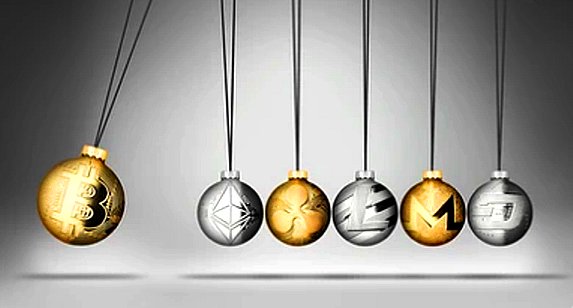Accredited InvestorsAltcoinAnatoli UnitskyAnti-Money Laundering (AML) In CryptoAPIArbitrageArtCoin TokenArticle DirectoryASICAuction Terminology GlossaryBasics of Stock Market InvestingBear MarketBest Crypto Payment Provider In the WorldBitcoinBlockchainBlockchain ConfirmationBlockchain Consensus MechanismBlockchain ForkBlockchain GlossaryBored Ape Yacht ClubBuild a Business That OutperformsBull MarketBuying SkyWay SharesByzantine Fault Tolerance (BFT) ExplainedCasascius CoinCentral Bank Digital Currency (CBDC)Centralized Crypto ExchangeCoinCoinsetCold WalletCollateralCommodity Futures Trading Commission (CFTC)Cross-Chain TechnologyCRUCrypto ExchangeCrypto GlossaryCrypto JokesCrypto Terms to KnowCrypto TickerCryptocurrencyCryptographyCryptojackingCryptounit BlockchainCryptounit GlossaryCryptounit ProgramdApp (Decentralized Application)Dead CoinDecentralized Exchange (DEX)Decentralized Finance (DeFi)Difference Between Bitcoin and EthereumDifferent Ways of Investing MoneyDigital CurrencyDistributed LedgerDo Your Own Research (DYOR)Dollar Cost Averaging (DCA)Dow Jones Industrial Average (DJIA)EncryptionERC-20ERC-721EthereumEvoScentFear Of Missing Out (FOMO)Fear, Uncertainty and Doubt (FUD)Fiat MoneyFNT Fintech CompanyGenesis BlockGlobal Unit PayGlossary of Banking TermsGlossary of Business TermsGlossary of Financial TermsHalvingHODLHot WalletHow Do I Start InvestingHow Rich is Satoshi Nakamoto?How to Create a BlockchainHow to Find Private InvestorsHow to Get Into FintechHow to Program Smart ContractsI Am Thrilled to Be a Part of This Global ProjectInitial Coin Offering (ICO)Initial Public Offering (IPO)Initial Token Offering (ITO)Innovation Basalt TechnologyInnovative Transportation TechnologiesInternational Bank Account Number (IBAN)Investing in Gold Mining StocksInvesting in Gold MiningJagerJoy of Missing Out (JOMO)Know Your Customer (KYC)LedgerLiquidity in CryptocurrencyMaker and Taker Fees in Crypto TradingMarket Capitalization (Market Cap)Meme CoinMetal Credit CardMetaMaskMillenials Now Have Access to Generational WealthMy Best Investment EverNew Digital EvolutionNFT GlossaryOff-Chain TransactionsOn-Chain TransactionsOpen Edition NFTPeer-to-Peer (P2P)Personal Loan GlossaryProbably the Best STO on the MarketProof of Stake (PoS)Real Estate Glossary of TermsReal Estate Investing GlossaryRebase TokenSecurities and Exchange Commission (SEC)Security Token ExchangesSecurity Token Offering (STO)Soulbound Decentralized Identities for Security TokensSoulbound ID Launch by Stobox Proves a SuccessSoulbound TokensStoboxStock Market GlossaryTestimonialsTether Platform and Token (USDT)UnitEx ExchangeUnitsky String TechnologiesUNTBUSDUValidatorWe Started Investing When We Were 25What are Blue Chip NFT?What are Blue Chip Stocks?What are Crypto Assets?What are Crypto Smart Contracts?What are CryptoPunks NFT?What are Digital Assets?What are Digital Collectibles?What are Gas Fees?What are Gas Wars?What are Hashmasks?What are Non Fungible Tokens?What are Non-Sufficient Funds (NSF)?What are Soulbound Tokens (SBT)?What are Stablecoins in Crypto?What are Transactions Per Second (TPS)?What are Utility NFTs?What are Utility Tokens?What Does Burning Crypto Mean?What Does Diamond Hands Mean?What Does Paper Hands Mean?What Does To The Moon Mean?What Does WAGMI Mean?What Happened to Satoshi Nakamoto?What is a 51% Attack?What is a Baby Boomer?What is a Backlink?What is a Banner?What is a Barcode?What is a Bid-Ask Spread in Crypto?What is a Block in Blockchain?What is a Block Reward?What is a Blockchain Address?What is a Blockchain Node?What is a Blockchain Oracle?What is a Blog?What is a Bond?What is a Bot?What is a Broker?What is a Business Accelerator?What is a Cash Cow?What is a Commercial Bank?What is a Commodity?What is a Con?What is a Credit?What is a Credit Limit?What is a Credit Rating?What is a Crypto Airdrop?What is a Crypto Bridge?What is a Crypto Scam?What is a Crypto Token?What is a Crypto Wallet?What is a Crypto Whale?What is a Crypto Winter?What is a Cryptocurrency Public Ledger?What is a Cryptocurrency Roadmap?What is a DAO?What is a Dark Pool?What is a Day Trader?What is a Dead Cat Bounce?What is a Default?What is a Derivative?What is a Digital Credit Card?What is a Fiscal Quarter?What is a Fungible Token?What is a Governance Token?What is a Grace Period?What is a Hard Fork?What is a Hot Wallet?What is a Hybrid Blockchain?What is a Hybrid PoW/PoS?What is a Joint Account?What is a Market Cap?What is a Merkle Tree in Blockchain?What is a Mining Farm?What is a Nonce? What is a PFP NFT?What is a POS System?What is a Prepaid Card?What is a Private Blockchain?What is a Private Key?What is a Public Blockchain?What is a Public Key?What is a Reserve Currency?What is a Ring Signature?What is a Routing Number?What is a Rug Pull in Crypto?What is a Safe Deposit Box?What is a Satoshi?What is a Security Token?What is a Seed Phrase?What is a Shitcoin?What is a Sidechain?What is a Soft Fork?What is a Spot Market?What is a State Bank?What is a SWIFT Code?What is a Tax Identification Number (TIN)?What is a Time Deposit?What is a Transaction Account?What is a Variable Interest Rate?What is a Virtual Assistant (VA)?What is a Virtual Card?What is a Virtual Currency?What is a Visa Card?What is a Whitelist in Crypto?What is a Whitepaper?What is Accounts Payable (AP)?What is AMA in Crypto?What is Amortization?What is an Accrual?What is an ACH Transfer?What is an Actuary?What is an Addendum?What is an Algorithm?What is an Angel Investor?What is an Annuity?What is an Asset?What is an ATM?What is an Atomic Swap?What is an Audit?What is an Avatar?What is an EIN?What is an Embargo?What is an Entrepreneur?What is an IDO (Initial Dex Offering)?What is an Interest Rate?What is an Internet cookie?What is an Investment Bank?What is an NFT Drop?What is an NFT Floor Price?What is an Ommer Block?What is an Orphan Block?What is an Outstanding Check?What is an Overdraft?What is Artificial Intelligence (AI)?What is B2B (Business-to-Business)?What is B2G (Business-to-Government)?What is Bartering?What is Bitcoin Dominance?What is Bitcoin Pizza Day?What is Blockchain Immutability?What is Blockchain Used For?What is BRICS?What is Business-to-Consumer (B2C)?What is C2C (Customer to Customer)?What is Capitalism?What is Catfishing?What is CFD Trading?What is Check Kiting?What is Cloud Mining?What is Communism?What is Content Marketing?What is Decentralization in Blockchain?What is DeFi in Crypto?What is Delisting?What is Depreciation?What is Digital Marketing?What is Diversification?What is Double Spending?What is Dumb Money?What is Dumping?What is Earnings Per Share (EPS)?What is Economics?What is Email Marketing?What is Equity?What is Etherscan?What is Fintech?What is Foreign currency?What is Forex?What is Fundamental Analysis (FA)?What is GameFi?What is Generative Art NFT?What is Gwei?What is Hard Currency?What is Hash Rate?What is Hashing in Blockchain?What is Inflation?What is Initial Game Offering (IGO)?What is Interest?What is Interest Income?What is Mainnet?What is Mastercard?What is Metaverse in Crypto?What is Mining in Cryptocurrency?What is Minting NFT?What is Mobile Banking?What is Money Laundering?What is NFT Alpha?What is NFT Metadata?What is NFT Rarity?What is NGMI Meaning?What is Nominal Interest Rate?What is Online Banking?What is Open-End Credit?What is OpenSea NFT Marketplace?What is Personal Identification Number (PIN)?What is Play-to-Earn?What is Polygon?What is Proof of Authority (PoA)?What is Proof of Work (PoW)?What is Public Key Cryptography?What is Pump and Dump?What is Quantum Computing?What is Refinancing?What is Retail Banking?What is Ripple?What is Sharding?What is Slippage in Crypto?What is Smart Money?What is Solvency?What is Soulbound ID?What is SSL?What is Staking in Cryptocurrency?What is Technical Analysis (TA)?What is Testnet?What is the Ask Price?What is the Better Business Bureau (BBB)?What is the Bid Price?What is the Dark Web?What is the InterPlanetary File System (IPFS)?What is the Gold Standard?What is the Lightning Network?What is the Prime Rate?What is the Sandbox?What is the Secondary Market?What is the World Bank?What is Tier 1 Capital?What is Tokenomics?What is TRC-20?What is Universal Banking?What is Unspent Transaction Output (UTXO)?What is Usury?What is Volatility in Crypto?What is Wash Trading?What is Web3?What is Whisper?What is XRP?What is Zero-Knowledge Proof (ZKP)?Who is Beeple?Who is Satoshi Nakamoto?Who is Vitalik Buterin?Why Tokenization is a Safe HavenWhy You Should Try Your Hand at Trading
What is a Shitcoin?
- Home
- Crypto Glossary
- What is a Shitcoin?
The popularity of cryptocurrency has skyrocketed, but with that success comes those looking to take advantage of the less informed. While many cryptocurrencies serve a purpose for a related blockchain or decentralized application, some hold no actual value.

What is a Shitcoin?
The phrase "shitcoin" refers to any cryptocurrency spin-offs that are failing or have already failed. These coins lack any clear purpose or solid fundamentals, and as a result, they have no longevity or stability.
A shitcoin is often created as a quick way to make money through initial coin offerings (ICOs) or by copying and pasting the code from a successful cryptocurrency.
Shitcoins usually lack any meaningful development or innovation and often rely on hyped-up marketing tactics to attract investors. They are usually created with the intention of taking advantage of the hype surrounding cryptocurrencies and blockchain technology, rather than providing real solutions or adding value to the ecosystem.
The value of shitcoins is usually not backed by any real assets or tangible value, and their prices are often highly speculative and subject to significant fluctuations. They can be seen as a high-risk investment, with a high likelihood of failure or being completely worthless in a short period of time.
It's important to differentiate between a legitimate cryptocurrency and a shitcoin. A legitimate cryptocurrency has a clear use case, a strong development team, and a robust community.
How It Works
The popularity of cryptocurrencies, especially Bitcoin, has skyrocketed since their introduction in 2009. This has attracted businesses looking to ride the blockchain wave and create their own digital assets known as altcoins. The supply of these altcoins is limited, and their scarcity is meant to drive up demand and value.
However, most cryptocurrencies have limited practical use, making their value mostly speculative. A shitcoin is a digital asset that lacks a clear purpose and fundamentals to back it up. It is considered valuable only because it exists and follows a familiar pattern: initial interest, rapid price increase, followed by a sharp decline as investors sell for short-term gains.
The creation and marketing of potential shitcoins will likely continue as long as interest in cryptocurrencies persists. While some governments like Japan support the use of cryptocurrencies, others like South Korea and China are cracking down on mining operations.
How Do You Recognize a Shitcoin?
The trustworthiness of a project's developers is a critical factor to consider when investing in cryptocurrencies. If the developers are anonymous, using fake names, and have not appeared in public, it is a red flag and they are considered untrustworthy. On the other hand, if they have doxxed themselves, by appearing in public through social media or other platforms, they are considered more trustworthy.
A project's promises should be backed by defined functionalities. Simply making big promises without a clear roadmap of how to achieve them raises suspicions of a scam. Furthermore, a project that appears to be copied or generic, with a generic website or indistinguishable white paper, is likely to be a shitcoin.
The number of holders is another indicator of a project's health. Experts suggest that a new coin worth investing in should have at least 200-250 holders and 5 to 8 transactions per minute. On the other hand, coins that fall short of these minimums are considered unhealthy and not worth investing in.
Finally, the liquidity pool is considered an essential aspect of decentralized exchanges. If a project does not have a liquidity pool of at least $30,000, it is likely a shitcoin and not worth investing in. Low numbers, such as hundreds or a few thousand, should be a warning sign.
Can Shitcoins Be a Good Investment?
Investing in shitcoins is generally a bad idea as they carry high risks with minimal chances of reward. The majority of these coins follow pump and dump strategies where only a few individuals understand the price movements. Lacking real value, investors are often left with worthless cryptocurrencies after the scheme is over. Although small-cap altcoins may generate high returns, it is only through sheer luck and timing of selling. The possibility of losing all initial investment is high.
Due to the unique nature of the cryptocurrency market and the limited understanding of blockchain technology among many investors, there is a potential for exploitation. Identifying a legitimate cryptocurrency can be challenging, as some may be created solely to deceive investors.
In conclusion, when it comes to investing in cryptocurrencies, it's crucial to perform thorough research and to not get caught up in the hype surrounding a particular digital asset. Always make sure to invest in projects that have a solid development team, clear use case, and have the potential to add real value to the ecosystem.
Related Articles

Initial Coin Offering (ICO)
The Initial Coin Offering (ICO) is an innovative method of raising capital through the use of cryptocurrencies. Such a model is more common in cryptocurrency initiatives that have not yet completed...

Altcoin
Alternative digital assets, such as a currency or token that is not Bitcoin, are referred to as altcoins. This terminology stems from the notion that Bitcoin is the first cryptocurrency and that all others are...

What is a Crypto Scam
Scams using cryptocurrency can take numerous forms. Scammers, like bankers, want your money and will go to any length to obtain it. To secure your crypto assets, it's important to understand when...

What is a Cryptocurrency Roadmap?
A Cryptocurrency Roadmap is a crypto business planning method that sets out a project's short and long-term objectives inside a changeable timetable.

What is a Whitepaper?
A whitepaper for a cryptocurrency project is a document that explains the project's goals, tokenomics, products, features, and...
- Home
- Crypto Glossary
- What is a Shitcoin?